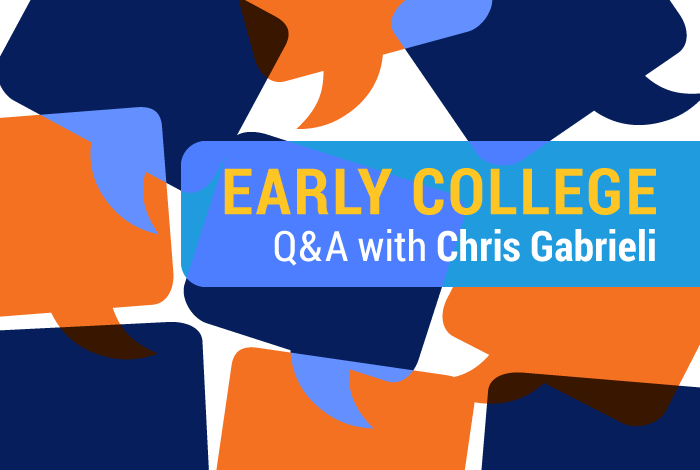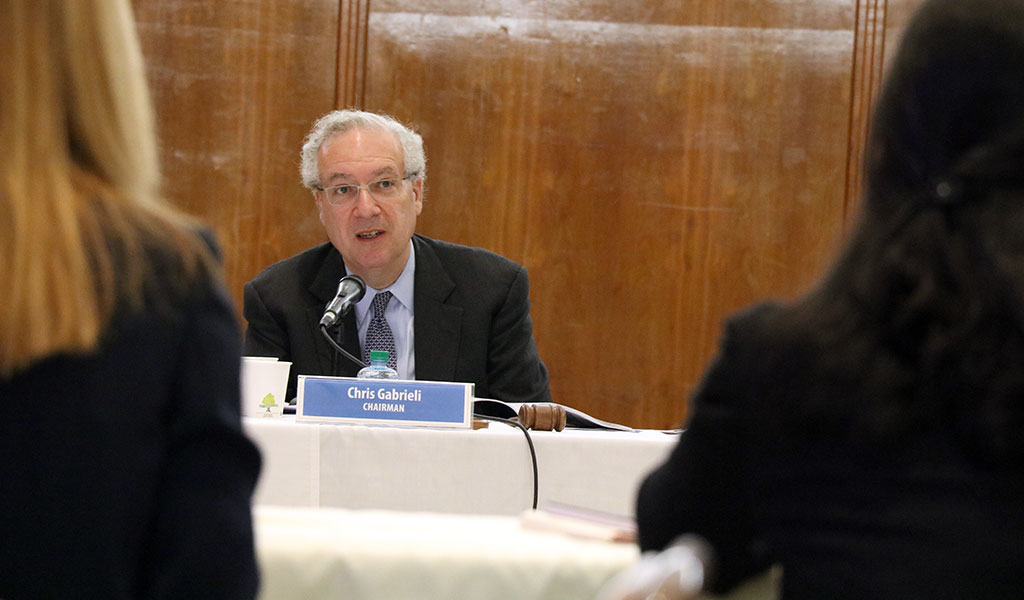
Chris Gabrieli, chair of the Massachusetts Board of Higher Education (BHE), joined DHE Forward to discuss the future of early college high schools in Massachusetts, following a vote by the BHE and the Board of Elementary & Secondary Education (BESE) to expand availability in the Commonwealth substantially by fall 2018.

It is exciting to be able to work on an opportunity that addresses several of our top priorities as a Board, builds on authentic momentum and energy from our campuses and school districts and leverages policy to the benefit of students. Three of our top goals are to increase student completion rates, narrow outcome gaps across socioeconomic differences and increase the number of graduates of our system. Early college directly addresses all three with hard, independent evidence; if done well, it can contribute significantly to all three goals. That efficacy helps explain why at least 27 existing, generally small-scale early college efforts have already emerged from our campuses and their district partners. To date, longstanding K–12 and higher ed policies that hew to traditional silos where a student is either in high school or in college—but not both—have actually been far more of an impediment than a support to fostering early colleges. That is why we need to forge new policy that will accelerate the growth and help ensure high quality for early college
“Students and the Commonwealth need early college opportunities. Our institutions are brimming with creativity and commitment to provide them.” Tweet
Existing dual enrollment and concurrent enrollment programs have helped many students for whom taking a single college course while still in high school has made sense. And they will continue to offer value. But a full-fledged early college effort requires:
We hope to find the right balance in the new policy between things that should be “tight” and things that should be “loose.” Mostly, we want to be tight about quality parameters that ensure broad, equitable access, targeting especially students now least likely to matriculate and complete higher ed, and that are successful in advancing large numbers of students to at least 12 credits on a real pathway. On the other hand, we want to see many existing programs as well as newcomers step forward with a diversity of ideas and approaches reflecting the many different opportunities and circumstances of both our students and our institutions. It will also be important to evolve the policy parameters based on our early learning about what works.
Experts tell us that students gain significantly by actually taking at least one or a few courses on a college campus among regular college attendees. That is likely to be a requirement to earn an “early college designation” under the new policy. But many early college programs have been very successful with properly trained and certified high school teachers now teaching accredited college-level courses. And online courses hold promise to be able to allow even more choices.
Some of the most exciting and successful early college programs have included or even focused on STEM pathways. For example, Marlborough’s STEM Early College High School (in partnership with Quinsigamond Community College and Framingham State University) focuses on four STEM pathways. But we all know that liberal arts develop the inquiring and higher order thinking mind, and employers often care more about those general skills than any specific ones. We expect and hope to see a wide variety of approaches that will build on what students need and want, and what institutions can offer at a high level of quality.
The Early College Initiative is intentionally sized to be big enough—4,000 students per grade, 16,000 students overall—to make a significant difference for the state, while also capping overall size until we know that the efforts are working. The EY-Parthenon study recommendations are based on a careful analysis of incremental costs such as advising and transportation. We are delighted that Senator Michael Moore, Senate Chair of the Legislature’s Joint Committee on Higher Education, has filed legislation that includes an expectation of such a funding stream. Of course, ultimately the outcome is up to the legislative and budgeting processes. We hope that a modest 5 percent increase in per-student spending will seem worth the payout, and the overall design focuses on requiring performance outcomes to be met, not just asserted.
“We are delighted that Senator Michael Moore, Senate Chair of the Legislature’s Joint Committee on Higher Education, has filed legislation that includes an expectation of (an early college) funding stream.” Tweet
With their resolution votes, the two Boards have created a standing, joint committee to provide governance. Department staff will now fill in the details of the program and designation process for final approval by the Boards by June 30, 2017. It is our intention and goal to issue the first RFP by summer, and to award designations by fall so that successful applicants can proceed with a planning phase and launch by the beginning of 2018–19 academic year. It will take a lot of people moving forward in good faith. I am quite optimistic that this will happen. Students and the Commonwealth need early college opportunities. Our institutions are brimming with creativity and commitment to provide them.